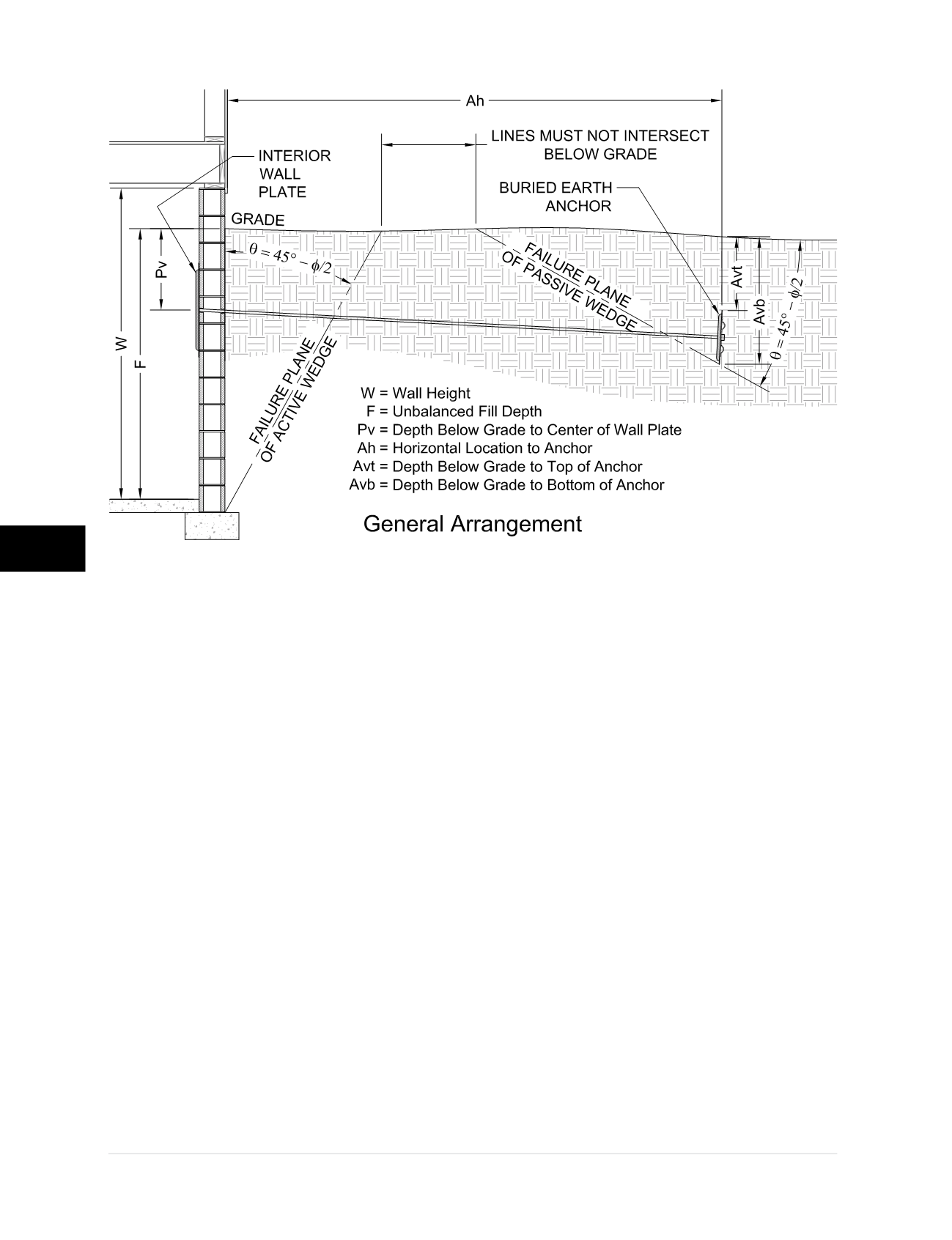
© 2014 Foundation Supportworks
®
,
Inc.
All Rights Reserved
p 292
Chapter 4
Miscellaneous Structural Support Products
CHAPTER 4
MISCELLANEOUS STRUCTURAL SUPPORT PRODUCTS
4.2.2 Design Theory
Wall anchor systems have been proven over the
years to be both an effective and economical
repair solution. Wall anchors not only arrest
further appreciable inward movement of the
wall, but in many cases can improve the wall’s
position and partially or fully straighten it. In fact,
in 1992, wall anchor systems were identified by
the Chief Appraiser for the U.S. Department of
Housing and Urban Development as the most
effective means of stabilizing bowing foundation
walls. Despite its tremendous track record, it
remains, however, a system that in some ways
is misunderstood by many design professionals,
building departments and code officials.
Why is this? Although the general concepts
about how anchor systems work are simple to
grasp, detailed evaluations are more elusive
than many designers initially suspect.
The first and most significant misstep that is
made is in the way the soil loads on the wall
are defined and quantified. Most mathematical
evaluations of a wall anchor system define soil
load as an equivalent fluid pressure gradient.
Most often about 60 psf/ft is used and sometimes
adjustments are made for the potential existence
of hydrostatic pressure from a water table. Soil
is obviously not perfectly rigid so it will tend to
deform and migrate laterally when subjected to
the compressive forces produced by gravity.
When designing a wall, soil is placed against a
static structure. The soil will exert these lateral
forces produced by gravity against the wall which
makes the equivalent fluid pressure method a
seemingly reasonable approach. However, soil
is obviously not a fluid so when evaluating a
system being used to actively push back against
the soil, the equivalent fluid pressure model
quickly breaks down.
This can be demonstrated in the following
example: A bowing block wall will typically
manifest a long horizontal crack at a mortar bed
joint. The soil pressure tends to produce tensile
stresses on the inside face of the wall. These
stresses have exceeded the capacity of the
Figure 4.2.1.a
General Geo-Lock
®
Wall Anchor System Arrangement


